The Fundamentals Of Strength Training For Runners
Supportive strength sessions can make a huge difference to your running and help you avoid injury – here’s how to achieve those benefits
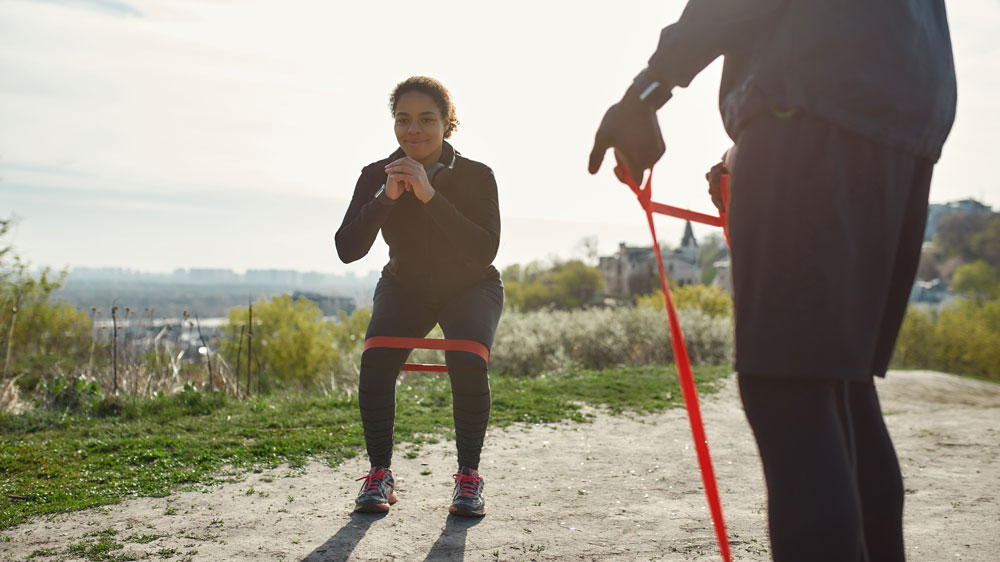
The repeated lockdowns we have endured have led to an increase in both the number of people running and the number of workouts being done at home. It should follow that there are a lot of new runners doing home workouts designed to support that running, but runners are notorious for not applying themselves to that kind of cross-training.
This is a mistake, because taking just a little time to do strength and conditioning work alongside your running will not only improve your performance but also reduce your risk of injury. You don’t need to lift heavy weights or do brutal HIIT sessions that will leave your muscles aching on your next couple of runs – it just takes some smart, focused strength work.
That’s especially true if you’re training for a marathon, when including some strength training in your routine is vital to support all the running you’ll be doing. It’s not always easy to know what to do, which is why we were pleased to see fitness app Fiit launch its Marathon Prep collection, including strength sessions and Pilates and stretching classes designed for runners.
We spoke to Fiit trainer Sean Kazab, who leads the strength sessions, about the importance of including some resistance work in your marathon training.
Following that, we also have a home strength workout for runners from Emma Kirk Odunubi, a strength and conditioning coach and a former trainer at F45 Tooting, to help everyone – not just Fiit subscribers or those training for a marathon – enjoy the benefits.
Why is strength training important?
“It’s divided into two big things,” says Kazab. “Number one is robustness and injury prevention. People often associate injury prevention with things like stretching, but one of the best ways to prevent injuries is strength training.
“With marathon runners, the main cause of injury is chronic injury. Things like runner’s knee, shin splints, hip flexor issues and lower-back issues are often caused by tissues going above and beyond what they normally do. If you strengthen these tissues, they can handle more.
Sign up for workout ideas, training advice, reviews of the latest gear and more.
“Number two is performance. Running economy and running efficiency are really important factors in performance. If you can get a stronger core, for example, that will mean less unwanted movement through the midriff and less energy loss. Over a short distance, that might not mean much, but over a long period like a marathon, those little bits of energy loss will build up to something quite significant.”
What kind of training should you do?
“For the most part the strength training that I prescribe to runners is similar to normal strength training,” says Kazab. “If you do squats, lunges and deadlifts, those help you build up that strong core and the muscles that you need for running, like the glute med.
“There are some nuances that you might want to think about, though. Running is what you’d call a sagittal activity – you only run forwards, you rarely move side to side – and it is very repetitive in motion. Runners don’t work those lateral muscles so they get weak, and that leads to long-term overuse injuries. Getting people to do lateral work is really good.
“Another nuance is exercise selection to manage the overall load. A good coach won’t just give you, say, a back squat just because it’s a really good exercise. A back squat is a great way to improve your leg strength, but it also seriously fatigues you. You’ll be able to lift a lot of weight, and the more weight you lift, the more systemic fatigue – fatigue around your whole body – you get.
“A marathon runner’s strength training should involve a lot of unilateral work. This will serve two purposes. One is you can stress muscles with less systemic fatigue – you can really smash those legs with a lunge, for example, but you will use less overall weight so your nervous system will get less fatigued. Also, unilateral work will help iron out any imbalances that you get from running.”
How often should you strength train and at what intensity?
“With any sort of training you’re looking at two landmarks,” says Kazab. “Minimum effective volume, so the least amount you can do to get significant gains, and maximum recoverable volume, so the maximum amount of work that you can recover from.
“You always want to be training in between those and the good news is that for most beginners, the minimum effective volume is quite low. You can do very little and get results. If you’re a beginner to resistance training, doing it one to two times a week, training around four reps away from failure – we call it having four reps in reserve – is enough. The better you get, and the better at recovering you get, the harder you’ll train. Maybe two to three times a week.
“But running is always your priority. You never want your strength training to take away from your running, so that’s when you look at maximum recoverable volume. If you’re sore from your strength training going into your long runs, you’re probably training with too much volume or too much intensity. So dial it back, use soreness as a guide. If suddenly your running performance drops significantly, then dial it back a bit – you’re probably training too close to maximum recoverable volume.
“Other things to consider are if you’ve got a big race coming up – then your strength training should taper off. In those last few weeks, the number of sets should drop. You’re looking to only maintain your strength.”
Should you do high or low reps with your exercises?
“It will vary depending on the exercise and the muscles you’re trying to work,” says Kazab. “Runners get a lot of hip flexor pain, and a good way to prevent that is to strengthen them. But if you do really heavy hip flexion work, other muscles will start to take over, so your hip flexors won’t be doing that work. So for hip flexors training, you want to do 20 to 30 reps to make sure it’s the hip flexors that are working. So when you’re trying to hit something specific like your hip flexors, glute med or calves, go for higher reps.
“Whereas with compound movements, you can get a really good effect from relatively few reps, I’d say six to 10 [using a weight that still leaves four in reserve]. I would never ever prescribe anything below six with really heavy weights, because you start to get neural fatigue. Your nervous system has to work very hard, and that will take away significantly from your running performance.”
How should you fit your strength training in with your running? Should you do it on recovery days?
“I would always leave those recovery days,” says Kazab. “We talk a lot about physical fatigue, but there’s also mental fatigue and stepping away from training is really important.
“At the end of the day, you want to prioritise your running. You don’t want strength training to affect your important runs. I would do it on an easier run day, and I would do it as the second session of the day rather than the first. The important thing comes first in the day, and then the less important thing, which is your strength training. Although I’m here to tell you how important strength training is, it is less important than your running!”
Strength Training Workout For Runners
The workout consists of four supersets. In a superset you perform one set of exercise A followed by one set of exercise B. Rest, then repeat the sequence until you’ve completed all the sets. You’ll need some kind of free weight – ideally a dumbbell or kettlebell – and a resistance band to get the most from the workout, though it can be done without either.
1A Banded monster walk
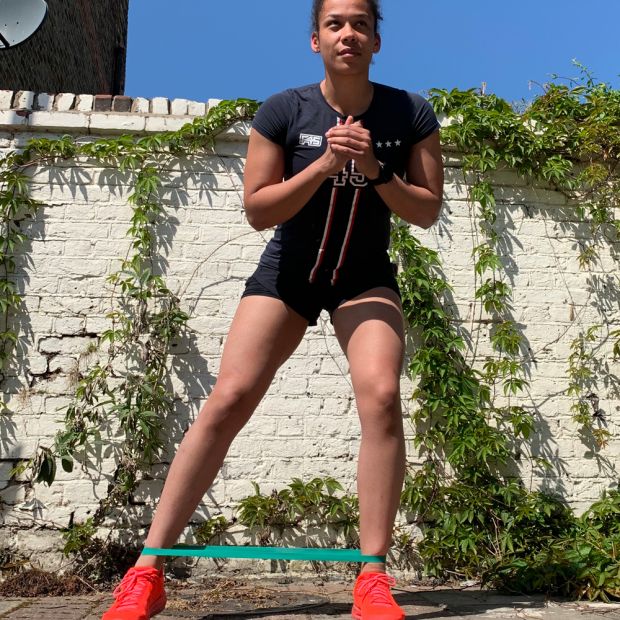
Sets 3 Reps 10 each side Rest 0sec
“Place the band around your ankles and stand with your feet hip-width apart,” says Kirk Odunubi. “While keeping tension in the band, adopt a quarter-squat stance and take ten small side steps to the right, then ten to the left. Focus on small controlled steps and keeping your chest up.”
1B Banded air squat
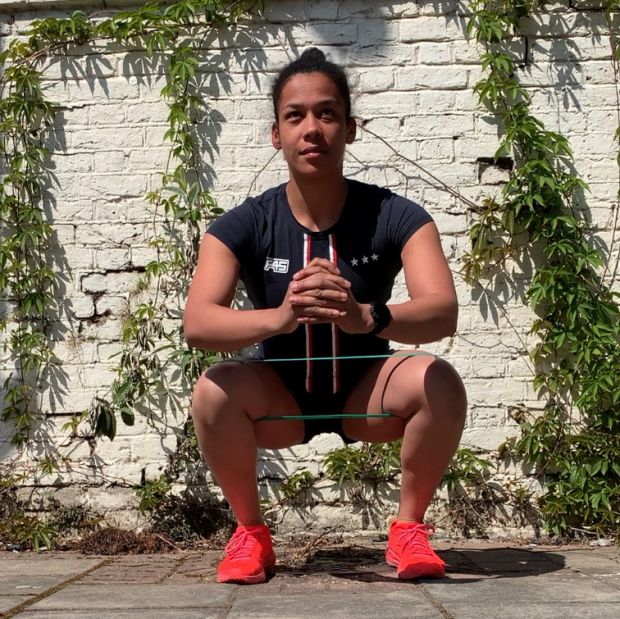
Sets 3 Reps 20 Rest 90sec
Move the band to just above your knees. Bend at your knees, sending your hips backwards and keeping your chest up, to lower until your thighs are parallel to the floor. Push through your heels to return to standing.
“Air [unweighted] squats with the band are important to fire up the glutes and get them used to the squatting pattern,” says Kirk Odunubi. “Make sure you have tension in the band at the bottom of the squat and, most importantly, don’t let your knees be forced drastically inward by the band.”
2A Banded goblet squat with pause
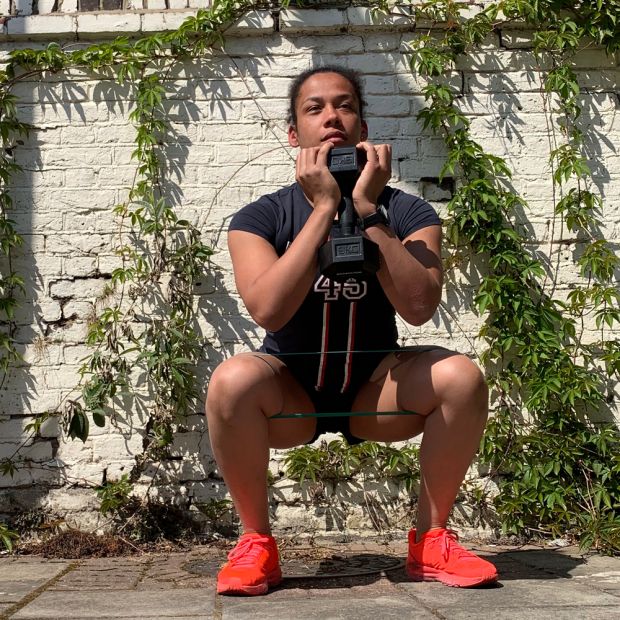
Sets 3 Reps 12 Rest 0sec
“Place the band just above your knees to add extra tension,” says Kirk Odunubi. “Hold a dumbbell or other weight in front of your chest, cupping the head of it. Control your descent in the squat, driving the knees against the band and sitting back into the movement. Pause for two seconds at the bottom and then drive quickly back up.”
2B Lunge
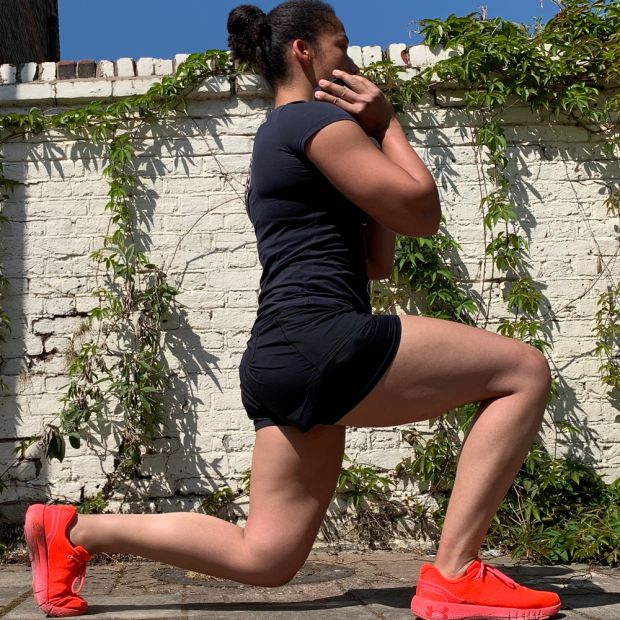
Sets 3 Reps 12 each side Rest 90sec
Step forwards into a lunge and lower until both knees are bent at 90°, then push back up.
“Forward lunges require a tight core and balance,” says Kirk Odunubi. “The key point when stepping forwards is to remember the feet should be shoulder-width apart – they want to be on train tracks, not on a tightrope!”
3A Staggered stiff-leg deadlift
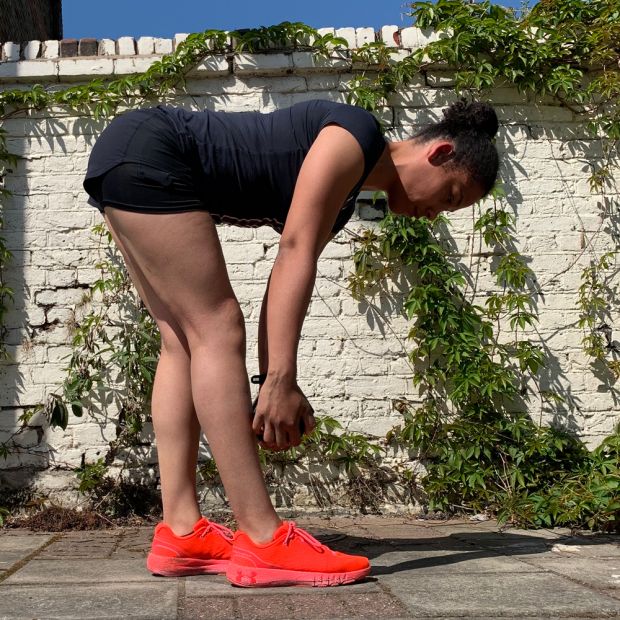
Sets 3 Reps 12 each side Rest 0sec
Hold your weight by your thighs and adopt a staggered stance with one foot behind you. Hinge at the hips to lower the weight (or just your hand if you don’t have a weight) until you feel a stretch in your hamstring, then come back up.
“Be sure to keep your back flat and tight,” says Kirk Odunubi. “Only go as far as your hamstring will allow. Control is key!”
3B Banded glute bridge
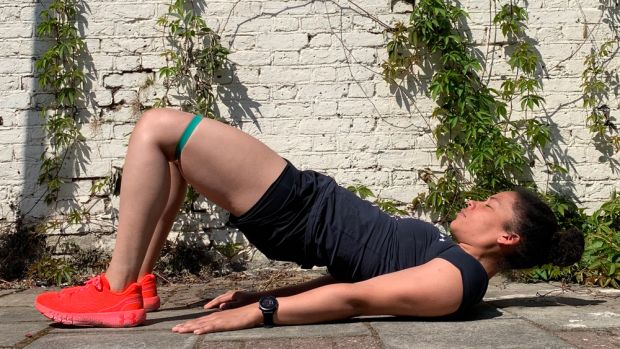
Sets 3 Reps 12 Rest 90sec
Place the band around your thighs just above the knee. Lie on the floor with your knees bent and feet flat on the floor. Raise your hips, pause at the top of the move, then come back down.
“Push out against the band as you squeeze your glutes at the top of the movement,” says Kirk Odunubi.
See related
- Common Running Injuries And What To Do About Them
- 15-Minute Core Workouts For Runners
- The Ideal HIIT Conditioning Workout For Runners
- Try The 30-Day Squat Challenge To Build Functional Muscle
- Pro Tom Evans On The Benefits Of Cross-Training For Runners
4A Banded side plank with leg lift
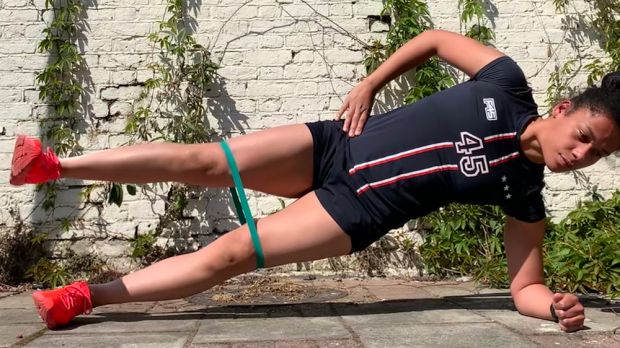
Sets 3 Reps 10 each side Rest 0sec
Put the band around your thighs, just above your knees. Get into a side plank position supported on your elbow and foot. Raise your top leg slowly and bring it back down in a controlled fashion.
“You can make this easier by removing the resistance band,” says Kirk Odunubi. “Squeeze your core and elevate your outer leg as far as possible.”
4B Tuck-up
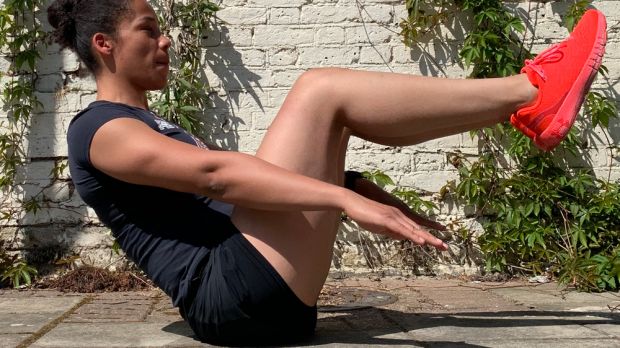
Sets 3 Reps 20 Rest 90sec
Lie on the floor with arms extended behind you and your legs extended. Use your core to raise your torso as you bring your knees up towards your chest and take your arms towards your feet. Then lower back to the start.
“Tuck-ups require a quick contraction to a table-top position on your sit bones,” says Kirk Odunubi. Return to the extended position with arms and legs at full stretch.

Nick Harris-Fry is a journalist who has been covering health and fitness since 2015. Nick is an avid runner, covering 70-110km a week, which gives him ample opportunity to test a wide range of running shoes and running gear. He is also the chief tester for fitness trackers and running watches, treadmills and exercise bikes, and workout headphones.
